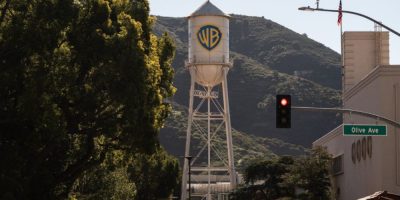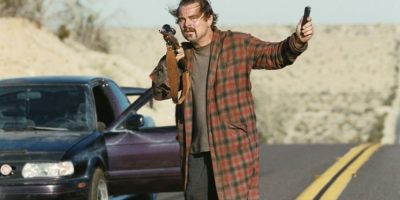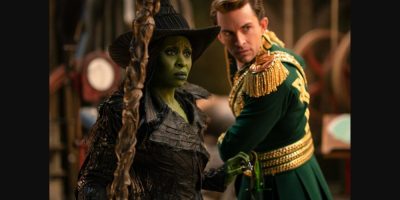
Fifty years after “Jaws” sunk its teeth into us, we’re still admiring the bite mark.
Steven Spielberg’s 1975 film, his second feature, left such a imprint on culture and Hollywood that barely any trip to the movies, let alone to the beach, has been the same since.
Few films have been more perfectly suited to their time and place than “Jaws,” which half a century ago unspooled across the country in a then-novel wide release accompanied by Universal Pictures' opening-weekend publicity blitz. “Jaws” wasn’t quite the first movie to try to gobble up moviegoers whole, in one mouthful (a few years earlier, “The Godfather” more or less tried it), but “Jaws” established — and still in many ways defines — the summer movie.
That puts “Jaws” at the birth of a trend that has since consumed Hollywood: the blockbuster era. When it launched in 409 theaters on June 20, 1975, and grossed a then-record $7.9 million in its first days, “Jaws” set the template that’s been followed ever-after by every action movie, superhero flick or dinosaur film that’s tried to go big in the summer — a sleepy time in theatres before “Jaws” came around.
And yet the “Jaws” legacy is so much more than being Hollywood’s ur-text blockbuster. It’s not possible to, 50 years later, watch Spielberg’s film and see nothing but the beginning of a box-office bonanza, or the paler fish it’s inspired. It’s just too good a movie — and too much unlike so many wannabes since –— to be merely groundbreaking. It’s a masterpiece in its own right.
“It supercharged the language of cinema,” the filmmaker Robert Zemeckis says in the upcoming documentary “Jaws @ 50: The Definitive Inside Story,” premiering July 10 on National Geographic.
That documentary, with Spielberg’s participation, is just a small part of the festivities that have accompanied the movie's anniversary. Martha’s Vineyard, where “Jaws” was shot, is hosting everything from concerts to “Jaws”-themed dog dress-ups. “Jaws,” itself, is streaming on Peacock through July 14, along with a prime-time airing Friday on NBC, with an intro from Spielberg. The “Jaws” anniversary feels almost more like a national holiday — and appropriately so.
But if “Jaws” is one of the most influential movies ever made, Hollywood hasn't always drawn the right lessons from it. “We need a bigger boat” has perhaps been taken too literally in movies that have leaned too much on scale and spectacle, when neither of those things really had much to do with the brilliance of Spielberg’s classic.
For the film’s 50th anniversary, we looked at some of the things today's Hollywood could learn from “Jaws" 50 years later.
Local Colour
Every time I rewatch “Jaws” — which I highly recommend doing on some projected screen, even a bedsheet, and preferably with an ocean nearby — I marvel at how much it gets from its Martha’s Vineyard setting.
Where U.S.-made film productions are shot has been a hot button issue lately. Various incentives often determine movie shooting locations, with set dressings, or CGI, filling in the rest. But “Jaws” shows you just how much more than tax credits you can get from a locale.
Spielberg was convinced the adaptation of Peter Benchley’s novel — inspired by Benchley’s childhood summers on Nantucket — shouldn’t be done in soundstages. After looking up and down the Atlantic coast, he settled on Nantucket’s neighboring island. Like his first film, the Mojave Desert-set “Duel,” Spielberg wanted his mechanized shark to swim in a real, definable place.
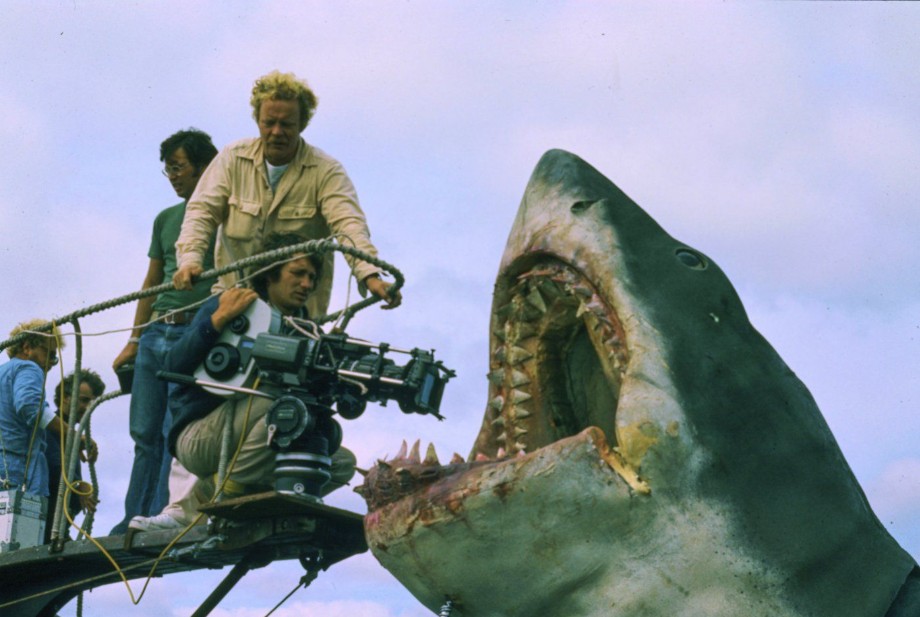
“I felt the same way about ‘Jaws,’” Spielberg says in the documentary. “I wanted to go to the natural environment so there was some kind of verisimilitude. So it needed to be in the ocean, out to sea.”
It wasn’t easy. The budget for “Jaws” nearly tripled to $9 million and the shoot extended from 55 to 159 days. Spielberg would never again be under financial pressure on a picture, but the tortured “Jaws” production put him under a microscope. An AP report from 1975 began: “It is news when a 26-year-old film director goes $2 million over budget and two and a half months over schedule and manages to avoid getting fired.”
More than any other time in his career, Spielberg fretted.
“‘Jaws’ was my Vietnam,” he told Richard Schickel. “It was basically naive people against nature and nature beat us every day.”
It also infused every inch of the frame with smalltown New England flavour in the way that no soundstage, or CGI, ever could.
Less is more
When Spielberg was ready to start filming, his star attraction wasn’t. The mechanized shark, nicknamed “Bruce” after the director’s attorney, suffered frequent failures that forced Spielberg to find different approaches to shooting his shark scenes early in the film.
“Jaws” instead became, to Spielberg, a kind of homage to Alfred Hitchcock’s “Psycho.” The suspense came less from the shark than the fear of the unknown and that spine-tingling question: What’s in the water? Spielberg, with the significant aid of John Williams’ instantly iconic score, delayed the appearance of his Great White until well into the film.
“The visual ellipsis,” the critic Molly Haskell wrote, “created far greater menace and terror, as the shark is nowhere and everywhere.”
Spielberg once estimated that Bruce’s mechanical delays added $175 million to the movie’s box office. On its initial run, “Jaws” grossed $260.7 million domestically in 1975. Adjusted for inflation, that’s about $1.5 billion. Nowadays, the shark would almost certainly be done, like most movie creatures, with computer animation. But “Jaws” showed that often the most powerful source of dread is our imagination.
Human-scale
This is the time of year when the fate of the world often hangs in the balance. All manner of summer movies have had no bones about destroying cities for a mere plot point. Yet for all its terror, “Jaws" features only a handful of deaths. All of its drama is human-scaled. Compared to more swaggering blockbusters today, “Jaws” would be considered a modest, mid-budget movie.
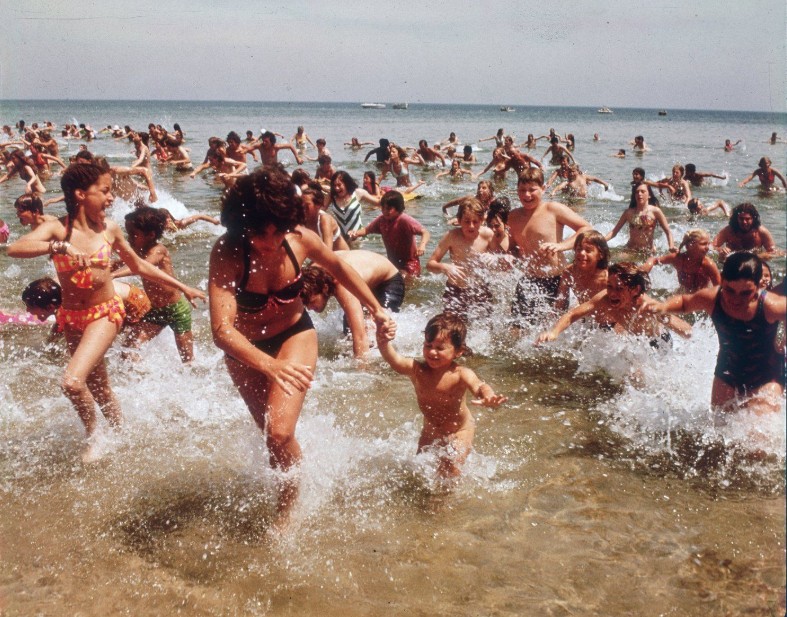
That’s partially why you have to almost remind yourself that the movie has only three main characters in Martin Brody (Roy Scheider), Matt Hooper (Richard Dreyfuss) and Quint (Robert Shaw). Casting director Sherry Rhodes peopled the cast with locals from the island, many of whom inject the film with little moments of day-to-day humanity. “Jaws,” in that way, feels more like a community than a cast.
Escapism with something to say
On the one hand, “Jaws” had little to do directly with its times. The Vietnam War had just ended. Watergate had just led to the resignation of President Nixon. The heart-stopping story of a shark off the Massachusetts shoreline promised escapism.
Yet “Jaws” has endured as a parable of capitalism, pulled out time and time again to illustrate those endlessly repeating clashes of cash versus social safety.
“Amity is a summer town,” says Amity’s mayor, Larry Vaughn (Murray Hamilton) in the film. “We need summer dollars.”
The shark gets the theme song and the movie poster, but the real villain of “Jaws” wears a pinstripe suit and smiles for the cameras. “As you can see, it’s a beautiful day and the beaches are open,” he says. More than the predator in the ocean, he, and the town, feast on human flesh.
‘Jaws’ is untouchable
There are boatloads of movies — including the three sequels that followed after — that have tried in vain to capture some of the magic of “Jaws.” But what happened in June 1975, let alone on Martha’s Vineyard the year before, isn’t repeatable. Even the greatest movies are products of a thousand small miracles. That title? Benchley came up with it minutes before going to print. The iconic poster came from Roger Kastel's painting for the book. Scheider, for instance, learned about the movie by overhearing Spielberg at a party. Williams relied on just two notes for one of the most widely known film scores in movie history.
But no ingredient mattered more on “Jaws” than the man behind the camera. Filmmaking talents like Spielberg come around maybe a couple times a century, and in “Jaws,” he emerged, spectacularly. What's maybe most striking about “Jaws” 50 years later is how much it still doesn't look like anything else.
___
List of the top summer movies since 'Jaws' turned it into blockbuster season in 1975
1975: “Jaws,” $260 million
1976: “The Omen,” $60.9 million
1977: “Star Wars,” $221.3 million
1978: “Grease,” $132.5 million
1979: “Alien,” $79 million
1980: “Star Wars: Episode V - The Empire Strikes Back,” $222.7 million
1981: “Superman II,” $59.2 million
1982: “E.T. The Extra-Terrestrial,” $242 million
1983: “Star Wars: Episode VI - Return Of The Jedi” $222.3 million
1984: “Ghostbusters,” $189.1 million
1985: “Rambo: First Blood Part II,” $139 million
1986: “Top Gun,” $131.3 million
1987: “Beverly Hills Cop II,” $151 million
1988: “Who Framed Roger Rabbit,” $130.7 million
1989: “Batman,” $239 million
1990: “Ghost,” $125 million
1991: “Terminator 2: Judgment Day,” $183.1 million
1992: “Batman Returns,” $159.8 million
1993: “Jurassic Park,” $316.6 million
1994: “The Lion King,” $262.3 million
1995: “Batman Forever,” $181.4 million
1996: “Independence Day,” $282 million
1997: “Men In Black,” $235.1 million
1998: “Armageddon,” $193 million
1999: “Star Wars: Episode I - Phantom Menace,” $421.4 million
2000: “Mission: Impossible II,” $214 million
2001: “Shrek,” $263 million
2002: “Spider-Man,” $403.7 million
2003: “Finding Nemo,” $332.7 million
2004: “Shrek 2,” $436.7 million
2005: “Star Wars: Episode III - Revenge of the Sith,” $380 million
2006: “Pirates Of The Caribbean: Dead Man’s Chest,” $414 million
2007: “Spider-Man 3,” $336.5 million
2008: “The Dark Knight,” $504.8 million
2009: “Transformers: Revenge of the Fallen,” $400.6 million
2010: “Toy Story 3,” $409 million
2011: “Harry Potter And The Deathly Hallows II,” $375.6 million
2012: “Marvel’s The Avengers,” $620.3 million
2013: “Iron Man 3,” $409 million
2014: “Guardians Of The Galaxy,” $281.2 million
2015: “Jurassic World,” $647.4 million
2016: “Finding Dory,” $482.9 million
2017: “Wonder Woman,” $409.5 million
2018: “Incredibles 2,” $602.6 million
2019: “The Lion King,” $523.6 million
2020: “Tenet,” $20 million
2021: “Black Widow,” $182.7 million
2022: “Top Gun Maverick,” $701.3 million
2023: “Barbie,” $612.3 million
2024: “Inside Out 2,” $650.8 million
___
Source: Comscore
